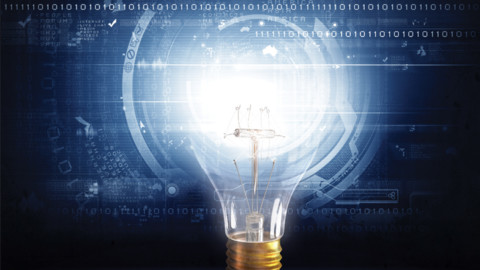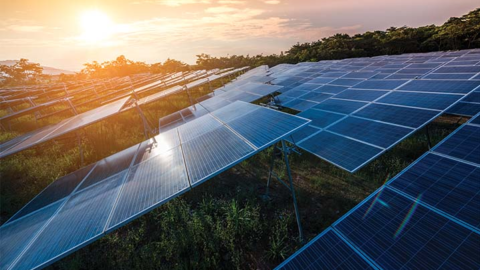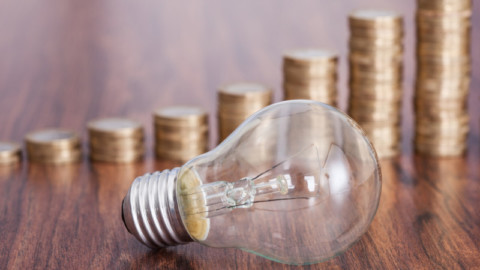by Dr Mark Ho, President, and Dr John Harries, Secretary, Australian Nuclear Association
As the energy industry continues the hunt for sources that are clean, affordable and reliable, Dr Mark Ho and Dr John Harries from the Australian Nuclear Association argue it’s time to bring nuclear energy back to the forefront of the energy debate.
The world currently has 451 nuclear power reactors in operation, providing 10.6 per cent of the world’s electricity, carbon-free. In the US, nuclear generated 792TWh of power in 2017, more than all renewables, including hydro power, combined at 625TWh. This figure is testament to nuclear’s high capacity factor (approximately 90 per cent dispatchable) which stands in stark contrast to wind (approximately 30 per cent non-dispatchable) and solar (approximately
20 per cent non-dispatchable).
Because most reactors are conservatively designed and meticulously maintained, the average lifespan of reactor systems stands at an incredible 60 years, with new reactors projected to last even longer at 80 years. And since nuclear provides synchronous baseload electricity generation, it offers the additional benefit of grid inertia and frequency stability, a feature which has become more important with the increase of intermittent generating sources on the grid.
Trends in nuclear power
The country with the most power reactors is the United States, with 99 units responsible for 20 per cent of US electricity supply. However, the European Union taken as a whole has a combined total of 130 nuclear reactors generating almost 30 per cent of the electricity in the EU. The EU’s leading country, France, has 58 reactors which supplied 72 per cent of the electricity in 2016 at a carbon-emission intensity one-tenth of neighbouring Germany1, a nation of similar sized grid and generation capacity.
On 17 December 2017 in a news conference after the EU summit in Brussels, Belgium, the French President Emmanuel Macron said “I don’t idolise nuclear energy at all. But I think you have to pick your battle. My priority in France, Europe and internationally is carbon dioxide emissions and (global) warming.
“What did the Germans do when they shut all their nuclear in one go? They developed a lot of renewables but they also massively reopened thermal and coal. They worsened their carbon dioxide footprint, it wasn’t good for the planet. So I won’t do that.”2
Macron’s sentiments demonstrate a growing realisation that nuclear plays an integral part of the world’s energy mix, and must be recognised as a clean energy working alongside renewables. To this end, the US, Canada and Japan issued a collective statement to include nuclear as a clean technology at the Clean Energy Ministerial meeting in Copenhagen in May 2018.3
Recently, the Trump Administration indicated it was ready to use Executive Powers to protect US energy security by bolstering nuclear baseload generators in the face of historically low gas prices. US states are also realising this, as reported in The New York Times: “New York and New Jersey, have offered subsidies to their struggling nuclear plants in the name of fighting climate change.”4
In the UK, the decadal effort to establish new nuclear builds is coming to fruition, with the EPR (European Pressurised-water Reactor) construction underway at Hinkley Point C and plans for building GE-Hitachi Advanced Boiling Water Reactors (ABWRs) and Westinghouse AP-1000s under negotiation.
In the United Arab Emirates, after a construction period of seven years, four units of the South Korean APR-1400 are now coming online, on time and on budget, a major feat given that the UAE only decided to introduce nuclear power as late as 2008.
China, presently operating 39 power reactors, has 19 reactors under construction, 41 planned and a hundred more proposed; this is by far the most active in new builds worldwide.5 Overall, 58 nuclear power reactors are under construction internationally and 154 nuclear power reactors are on order or planned with approvals, funding or major commitment in place.
Small modular reactors
At the same time, the world is moving ahead with smaller and safer forms of nuclear power. Five small modular reactor (SMR) designs of less than 300MW are within an eight year deployment timeframe, including NuScale in the US (recently uprated from 50 to 60MW per unit), the Argentine CAREM (32MW), South Korea’s SMART (100MW with desalination as bonus), the Chinese ACP-100 (100MW) from CNNC and the Russian KLT-40S with two barge-mounted 35MW units.
All these SMR designs have large water reservoirs supplying passive cooling to safely remove fission-product decay heat after the reactor is shutdown. This eliminates the type of “station blackout” accidents seen in Fukushima. Factory fabrication of modular components will reduce build times from seven years to three to four years, and the smaller size will also mean cheaper reactors which are accessible to more countries.
The IAEA (International Atomic Energy Agency) is establishing SMR deployment guidelines, having just convened the first SMR Technical Working Group meeting in Vienna.6 The target markets for SMRs include both established and new-to-nuclear countries, all of which are facing the imminent retirement of coal-fired power plants. The smaller size and superior safety of SMRs means the traditional EPZ (Emergency Planning Zone) around large 1GW reactors can shrink from a 10 mile (16km) radius to as small an area as the site boundary, making SMRs ideal brownfield replacements for retiring coal-fired power plants.
Radioactive waste
A nuclear fuel bundle usually stays in the reactor for 18 to 24 months, undergoing fission and supplying energy. It is then taken out of the reactor and stored in a spent fuel pool for about ten years to allow the decay-heat to reduce. After this time it can be geologically disposed or reprocessed to make new fuel.
The very radioactive component of the spent fuel generating decay heat is from the fission products of the split uranium. After the spent fuel has cooled for ten years, the most important of these fission products are strontium and cesium, with half-lives of 28 and 30 years respectively. Half-life is the period it takes for half of the quantity of a radioactive element to disappear via radioactive decay.
What’s important to note is that after ten successive half-lives, the radioactive content is reduced to 0.1 per cent of its original radioactivity and down to 0.0001 per cent after 600 years. This means that after 600 years, the radioactive strontium and cesium content in used fuel will have all but disappeared, resulting in the radioactivity in spent fuel being similar to the radioactivity in the uranium ore from whence it came.
More significantly, although spent fuel is very radioactive, its volume is small and it can therefore be safely contained in fuel casks, as has been the practice in nuclear plants around the world. To take the final step of radioactive waste disposal, Sweden and Finland are close to commissioning their radioactive waste disposal facilities after a prolonged and careful study of the sites’ geological suitability – thus proving that there are technical solutions for the disposal of high level nuclear waste.
The Australian context
Currently, Federal legislation prevents the consideration of nuclear power plants by prohibiting their environmental assessment and regulation by Federal departments and agencies as covered in the Environment Protection and Biodiversity Conservation Act 1999 (the EPBC Act) and the Australian Radiation Protection and Nuclear Safety Act 1998 (the ARPANS Act). This stands in conflict with assertions of technological neutrality in the Finkel Review7 and is in contrast to observations made in CSIRO’s Low Emissions Technology Roadmap (2017) that states SMRs can contribute to Australia’s low emissions energy.8 Indeed, the legislation banning nuclear power was written 20 years ago, without the beneficial development of safer reactors and without the urgency of the Paris Agreement where countries have pledged to reduce carbon emissions, in a collective effort to arrest global warming.9
Nuclear power can contribute to Australia’s carbon reduction and offers distinct advantages in doing so. Nuclear is a concentrated form of energy, a feature in keeping with traditional baseload generators that don’t require large areas of land or grid build outs for harvesting diffuse sources of energy.
Unlike intermittent power sources, it doesn’t require capacity duplication in the form of backup generation. Nuclear power works 24/7 with a minuscule carbon footprint on par with wind and solar in its lifecycle. Thus nuclear in itself solves the energy trilemma of providing baseload, clean and affordable electricity, and so must be considered in Australia’s future energy mix. To do so requires the removal of Federal legislative prohibitions on nuclear power.

















